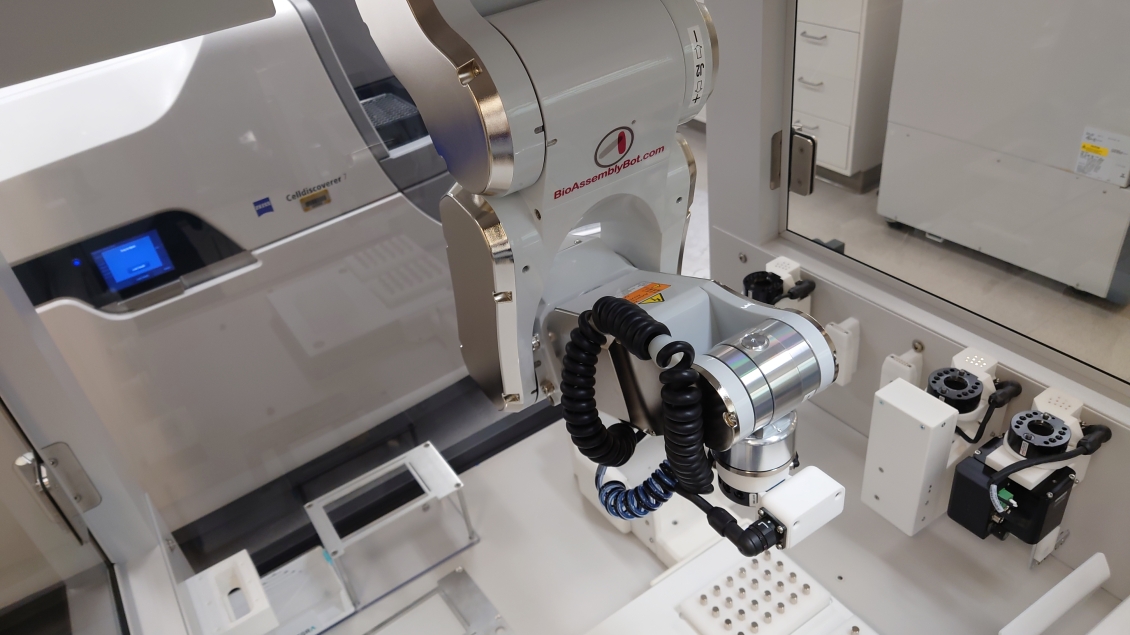Back to Research
-
AI & Machine Learning -
Applications to Complex Genetic Diseases -
4D Nucleome -
Genomics, Gene Regulation & Epigenomics -
Multi-“omics” Integrative Bioinformatics -
Protein Structure, Proteomics & Alternative Splicing -
Systems Biology & Networks Analysis -
Translational Bioinformatics, Drug Discovery & Pharmacogenomics -
Grants -
Software & Bioinformatics Tools

Below is a listing of software and bioinformatics tools developed by DCMB faculty and researchers.
- Bamnostic: A pure Python multi-version tolerant, runtime and OS-agnostic BAM file parser and random access tool.
- Broad-Enrich: Test for enriched biological pathways, Gene Ontology terms, or other gene sets (Sartor)
- Canny: Assessing copy number variation genotypes (Mills)
- Dinumt: Identification and genotyping of nuclear insertions of mitochondrial origin (Mills)
- fastCN: A pipeline for the fast estimation of copy-number based on read depth using the multi-mapper mrsFAST (Kidd)
- F-seq: Individual sequence data summarization and display (Boyle)
- F-seq2: A generic peak caller using kernel density estimation (Boyle)
- insertion-genotype: Genotyping Mobile Element Insertions based on remapping reads (Kidd)
- Islet eQTL variants: Exploration of variants in islet expression quantitative trait loci (Parker)
- LocusZoom: Plotting regional association results (Willer)
- LRpath: Gene set enrichment testing using logistic regression (Sartor)
- MethylSig: Analyzing bisulfite sequencing data (Sartor)
- Nephroseq: Analysis of publicly available renal gene expression data (Kretzler)
- Palmer: Pre-mAsking Long reads for Mobile Element inseRtion
- PePr: Peak Prioritization Pipeline, an analysis pipeline for ChIP-Seq experiments with biological replicates (Sartor)
- QuicK-mer2: K-mer based analysis for paralog specific copy number estimation (Kidd)
- RegulomeDB: A database that annotates SNPs (Boyle)
- SAIGE: Efficiently controlling for case-control imbalance and sample relatedness in single-variant assoc tests (SAIGE) and controlling for sample relatedness in region-based assoc tests in large cohorts and biobanks [SAIGE-GENE] (Willer)
- Self Organizing Maps: Exploration of the combinatorial space of transcription factor binding (Boyle)
- Svelter: Identification of rearrangements from paired-end sequencing data (Mills)
- 3DRobot: Protein decoy structure generator (Freddolino)
- ABACUS: Extraction of label-free quantitative information from MS/MS data sets (Nesvizhskii)
- ANGLOR: Protein backbone torsion angle prediction (Freddolino)
- BatMass: Mass spectrometry data visualization (Nesvizhskii)
- BSpred: Sequence-base protein-protein binding site prediction (Freddolino)
- COACH: Protein ligand binding site prediction (Freddolino)
- COFACTOR: Structure based protein function prediction (Freddolino)
- CRAPome: Contaminant Repository for Affinity Purification (Nesvizhskii)
- Crystal-C: A computational tool for refinement of open search results (Nesvizhskii)
- DEMO: Protein domain structure assembly (Freddolino)
- DIA-UMPIRE: Analysis of data independent acquisition (DIA) mass spectrometry-based proteomics data (Nesvizhskii)
- Disorder Atlas: Interpretation of intrinsic disorder predictions using proteome-based descriptive statistics (Schnell)
- EDTsurf: Construction of macromolecular surface (Freddolino)
- FragPipe: A complete proteomics pipeline with MSFragger search engine at heart (Nesvizhskii)
- HAAD: Hydrogen atom addition for protein structures (Freddolino)
- I-TASSER: Protein structure prediction and structure-base function annotation (Freddolino)
- I-TASSER-MR: Determining phase of X-ray crystallography using structure prediction (Freddolino)
- IonCom: Protein Ion ligand binding site prediction (Freddolino)
- LOMETS: Meta-server for protein threading and fold-recognition (Freddolino)
- Luciphor: Localization of post-translational modifications on peptide sequences (Nesvizhskii)
- Luciphor2: An expansion of Luciphor in JAVA (Nesvizhskii)
- MAP-DIA: Model-based Analysis of Quantitative Proteomics from Data Independent Acquisition Mass Spectrometry (Nesvizhskii)
- MM-align: Protein-protein complex structural alignment (Freddolino)
- ModRefiner: High resolution protein structure refinement program (Freddolino)
- MSFragger: Ultrafast and comprehensive peptide identification in mass spectrometry–based proteomics (Nesvizhskii)
- MUSTER: Protein threading program for identifying global structure template for target sequence (Freddolino)
- NESTEDCLUSTER: Construction of protein complexes (Nesvizhskii)
- PD-Nodes: The implementation of MSFragger and Philosopher (PeptideProphet) as Proteome Discoverer nodes (Nesvizhskii)
- Philosopher: A complete toolkit for shotgun proteomics data analysis (Nesvizhskii)
- PROHITS: A Laboratory Management System (LIMS) for interaction proteomics (Nesvizhskii)
- PSSpred: Protein secondary structure prediction (Freddolino)
- QPROT: Analysis of differential protein expression (Nesvizhskii)
- QUARK: Ab initio protein structure prediction (Freddolino)
- REMO: Reconstructing full-atom protein structure model from C-alpha trace (Freddolino)
- ResQ: Estimating B-factor and residue-level quality of protein structure (Freddolino)
- RW and RWplus: Atomic-level potential for protein structure recognition (Freddolino)
- SAINT: Significance Analysis of INTeractome (Nesvizhskii)
- SEGMER: Protein threading program for identifying local conserved structure motifs (Freddolino)
- Spectre: Identification of regions of active translation from ribosome profiling sequence data (Mills)
- SPICKER: Protein decoy selection through structure clustering (Freddolino)
- STRUM: Prediction of protein stability change upon single point mutation (Freddolino)
- SVMSEQ: Protein residue-residue contact prediction by Support Vector Machine (Freddolino)
- ThreaDom: Threading-based protein domain boundary prediction (Freddolino)
- TM-align: Protein structural alignment (Freddolino)
- TM-score: Quantitative assessment of protein structure similarity (Freddolino)
- TMT-Integrator: A tool that integrates channel abundances from multiple TMT samples and exports a general report for downstream analysis. (Nesvizhskii)
- Trans-Proteomic Pipeline: Primary processing of mass spectrometry-based proteomic data (Nesvizhskii)
- MetDisease Plugin for Cytoscape: Annotation of a metabolic network with MeSH disease terms (Karnovsky)
- MetScape3: The visualization and interpretation of metabolomic and expression profiling data (Karnovsky)
- Network WorkBench: A large-scale network analysis, modeling and visualization toolkit (Schnell)
- ConceptMetab: Mapping and exploring the relationships among metabolite sets (Sartor)
- MetDisease Plugin for Cytoscape: Annotation of a metabolic network with MeSH disease terms (Karnovsky)
- MetScape3: The visualization and interpretation of metabolomic and expression profiling data (Karnovsky)
- Compressive Big Data Analytics (CBDA): (Dinov)
- Data Science: Time Complexity, Inferential Uncertainty, and Spacekime Analytics: (Dinov)
- DataSifter: Statistical Obfuscation of sensitive health data: (Dinov)
- LONI Pipeline: Graphical Workflow Environment for Imaging, Informatics and Genomics Computing (Dinov)
- Probability Distributome Project: For diverse probability distributions (Dinov)
- R Predictive Big Data Analytics (PBDA): Big Data Discovery Science, and Big Data To Knowledge Software (Dinov)
- SOCR: Statistics Online Computational Resource (Dinov)
- WAIR: Wavelet Analysis of Image Registration (Dinov)